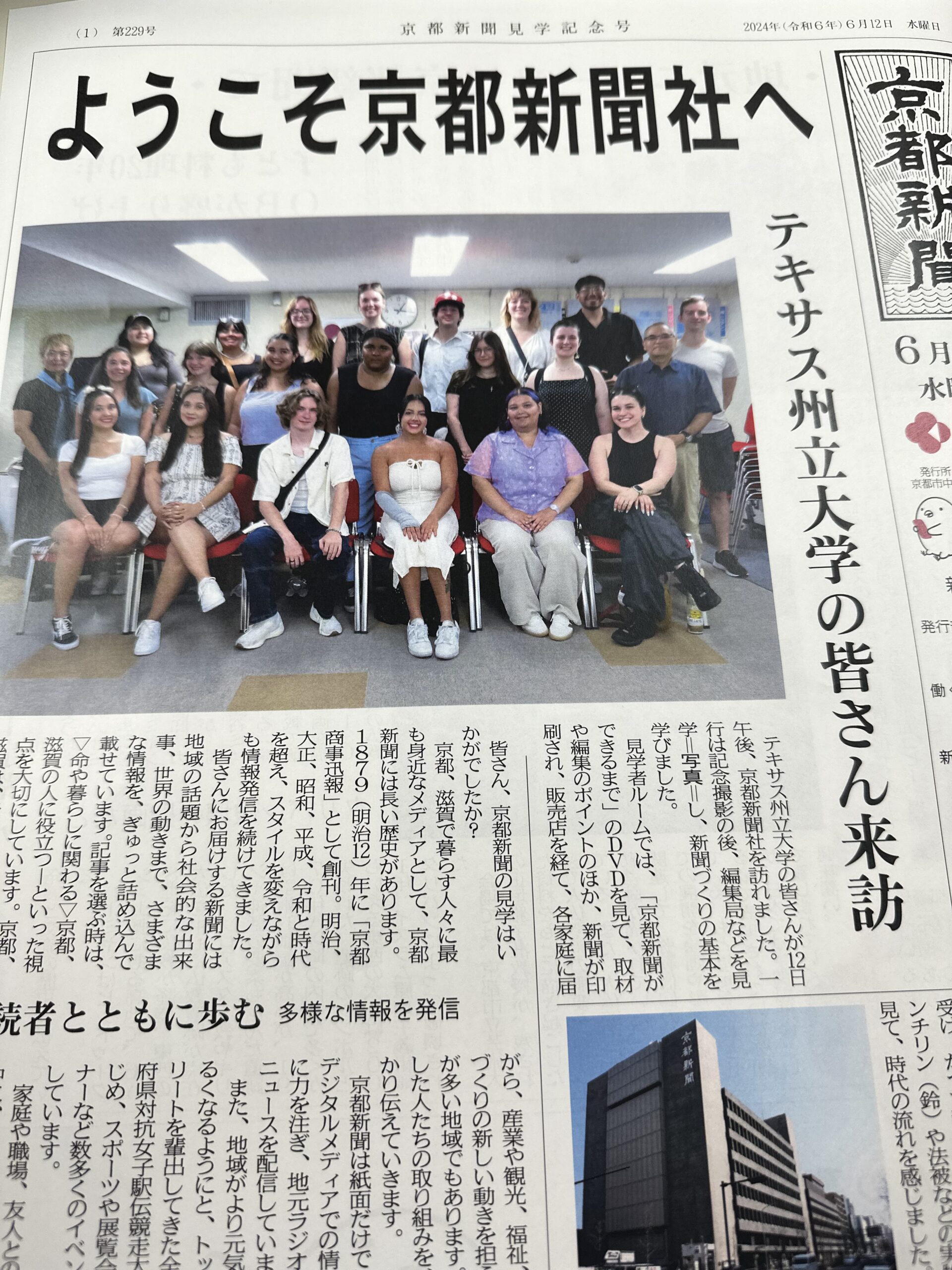
Over the course of 12 days, SJMC Japan had the chance to visit three media companies and a Japanese university, professional visits designed to give students a glimpse of life in Japan.
By visiting the Tokyo bureau of the Wall Street Journal and meeting with a co-founder of Unseen Japan, the group experienced broad perspectives from long-standing institutions and others relatively new to the media scene. One of these visits that stuck out to me the most was The Kyoto Shimbun with their commitment to tradition with its newspaper in an ever-changing world of social media.
Upon arriving at the building, I was surprised that the newspaper’s tour guide asked us to pose for a group photo. At all our other company visits, we always initiated asking for a group picture but here was the opposite. As we lined up ready to take our picture, little did we know we were about to experience the efficiency and process of this newspaper firsthand.
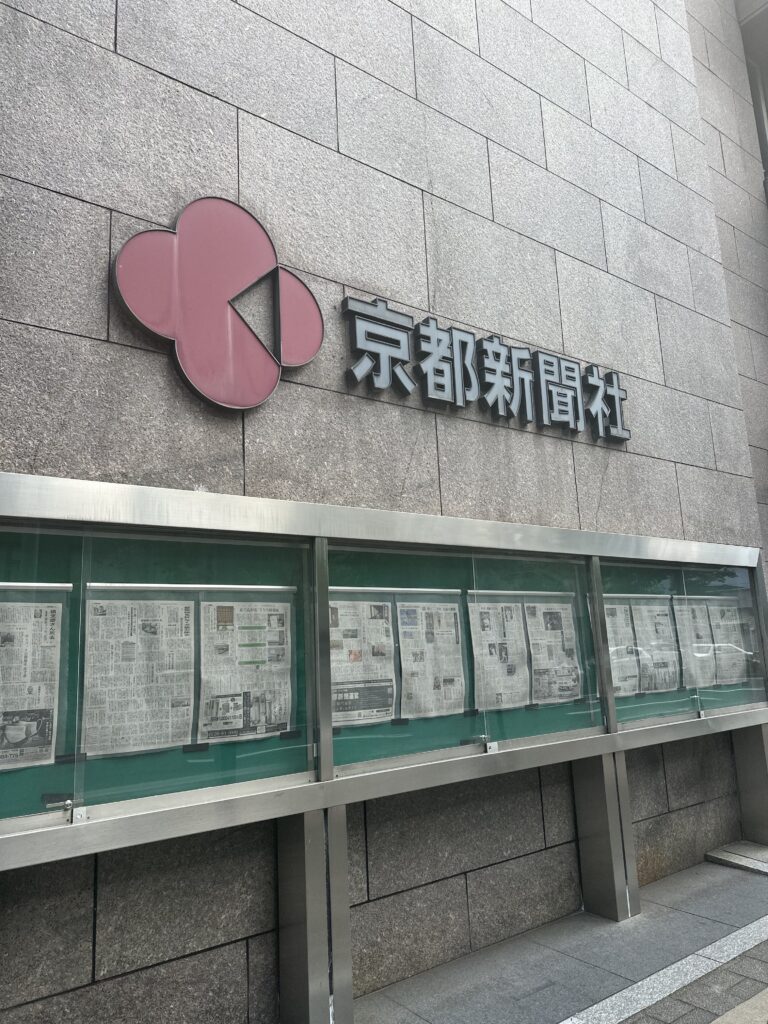
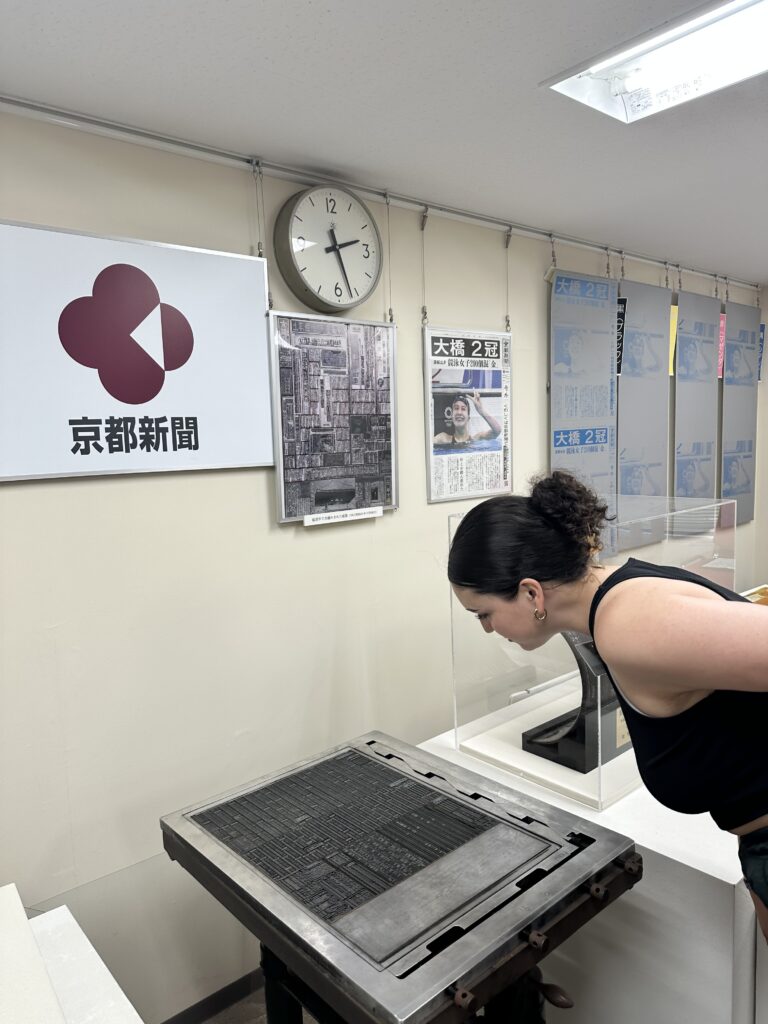
Initially, we were given the rundown of the basic operations of the newspaper, with an impressive two editions printed a day (morning and evening). The Shimbun prints 365 days a year with 340,000 issues in the morning, and 130,000 issues in the evening, all while gathering news and reporting 24/7.
It’s evident in the amount of work this publication pours into its newspaper and the pride it has for serving its community. Growing up in the States, I’ve always had a strong connection with newspapers being delivered first thing in the morning, so to me, it was a shock to hear of a publication printed and distributed twice a day. This publication covers local news, sports and special interests.
However, the paper’s coverage is not limited to just Kyoto. They also include international news in their editions, which is acquired through news wire services. This concept of using a wire service created a parallel to American newsrooms and the constant emphasis on AP style in mass communication classes. As the AP News Wire is used by publications nationwide and an emphasis on AP style is used to create consistent style in news writing, regardless of topic or location.
We were given a tour of Kyoto Shimbun’s offices, seeing the newsrooms and sports photographers’ equipment and getting a glimpse into the real work that goes into making the newspaper. Upon entering the office where sports reporters were working, one could hear and see them looking through photos from a baseball game. As they went through, they were choosing the best picture and would ask each other which one was the best. It was really interesting to see this process live.
There were so many parallels to the work we’re doing in Lecturer Sara Shield’s mobile storytelling in the outdoors class. Before posting, students have their work reviewed by the graduate students and Shields before posting on the class Instagram account.
The Kyoto Shimbun’s commitment to serving the public goes beyond the print publication. The newspaper also has an Instagram account that features pictures from news and feature stories which also promotes the newspaper’s work. This model of Instagram use by a newspaper is very different from what’s typically seen in the States. The Kyoto Shimbun uses platforms like Instagram as more of a marketing tactic teasing the stories in its newspapers rather then streamlining the news directly on the platform.
This model of advertisement and social media use, allows there to be an intriguing nature for readers to want to pick up the newspaper, as well as subscribe for certain content.
I feel like in the States, there’s been a sort of loss on the focus on print media, and everything has become so digitized. It was refreshing to see an emphasis on the production of print news with a social media component.
The biggest takeaway for me from this company visit is that print media isn’t dead, and in a Q&A session after the tour with reporter Yuko Hayashiya, this point was further emphasized.
Hayashiya mentioned that in viewing news online one might be “limited to what you search for.” Reading a newspaper, she said, exposes readers to new perspectives that they might not otherwise get. In a social media world full of algorithms and suggestions, it’s very easy to receive skewed news, seeing such a small portion of news that’s in circulation.
After learning about the efficient production process of the Kyoto Shimbun, we got to see a little glimpse of it as the group got a commemorative mock printout of newspaper featuring the picture taken at the beginning of the visit, with an actual news story under it. It’s evident the pride that The Kyoto Shimbun,takes in producing its paper and the intention of its strategies didn’t go unnoticed.
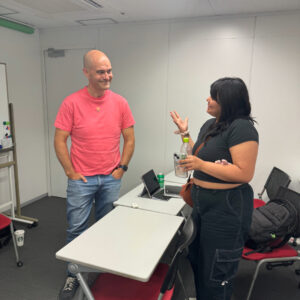





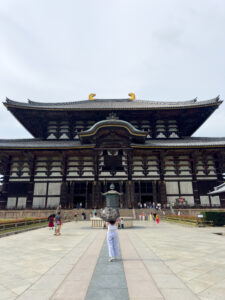
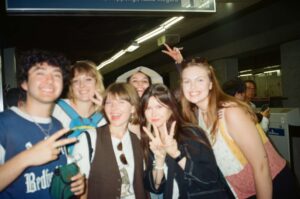
What a wonderful experience. Growing up we always had the printed newspaper to look for, and even visited their offices and saw first hand how they printed their issues (this was a school field trip). This was 40 years ago!